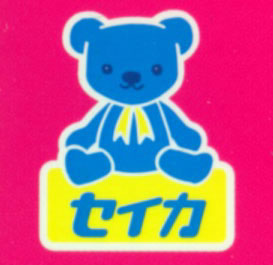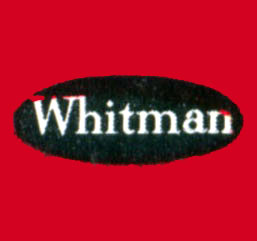| Publisher | Decade | Logo | Parent Company |
|---|---|---|---|
| Golden Books | 1980s |  | Western Publishing |
| Golden Books | 1990s |  | Western Publishing |
| Golden Books, and a bunch of other subsidiaries, fall under Western Publishing. The Whitman books of the 60s and 70s were later reprinted under the GB banner, but failed to change the date to show they were reissues. | |||
| Parragon Books | Logo | Cottage Door Press | |
| Parragon created high quality books for several years, but were acquired by Cottage Door in 2018. | |||
| Seika Note | 1960s |  | |
| 1970s |  | ||
| 1980s |  | ||
| 1990s+ |  | ||
| Seika Note is one of the primary publishers for anime related books in Japan. | |||
| Showa Note | 1960s |  | |
| 1970s |  | ||
| 1980s+ |  | ||
| Showa Note is one of the primary publishers for anime related books in Japan. | |||
| Sun-Star | 2000s |  | Seika |
| Sun-Star is a subsidiary of Seika, which is why the logo is similar to the standard Seika bear logo. | |||
| Whitman | 1960s |  | Western Publishing |
| 1970s |  | Western Publishing | |
| Whitman also falls under Western Publishing. The Whitman books of the 60s and 70s were later reprinted under the Golden Books banner, but failed to change the date to show they were reissues. When reprinted, they also were also abridged, so a 128 page book may have become only 80 pages. In some cases, a 1960s book was reprinted in the 70s, losing about 40 pages, and then reprinted again in the 80s under the Golden Books banner, losing another 20 pages. | |||
Publishing Companies
Book publishers come and go, and a select few stand the test of time. Through acquisitions and mergers, whole catalogues get absorbed by other companies, and in some cases bankruptcies cause a lot of work to get tossed out like yesterday’s news. With all the books I’ve preserved, and looking at all the logo design changes and layout updates, it becomes pretty clear as to what decade a book would come from, even without seeing the printed copyright year on the title page. And this is quite useful, as there are books out there that have been reprinted several times but the publisher never updated the year either through forgetfulness or just laziness. This guide was created to display the logos and timeframes they fall in to, for the collectors and sellers, since it is not always crystal clear. I’ve seen 3rd editions priced as 1st editions because the date wasn’t changed, and with no existing definitive resource (before now), it’s hard to convince the seller otherwise. I hope you find this helpful and a little informative.








